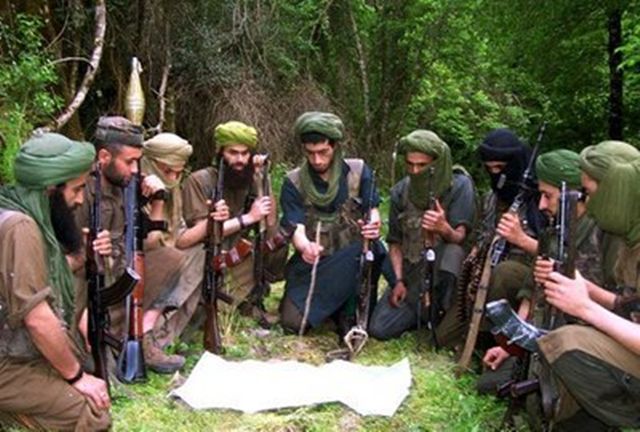
Al-Qaeda in the Islamic Maghreb’s Operational Revival in Northern Algeria
Publication: Terrorism Monitor Volume: 9 Issue: 36
By:

In the past few months, there has been a rather remarkable operational return of Al Qaeda in the Islamic Maghreb (AQIM) in Algeria. On July 16, a double suicide attack rocked a security compound in the small town of Bordj Menail, 60 km east of Algiers, with two people killed and 14 injured (Algérie Plus, Jul 16). A few days later, Algerian security forces in the area of Thénia intercepted an AQIM team alleged to be on its way to carry out an attack in Algiers (Tout Sur l’Algérie, Jul 26).
The most important attack occurred in late August, when another double suicide attack hit the military academy of Cherchell, about 100 km west of Algiers, killing 18 people and injuring another 20 (Algerian Press Service, August 27; El Watan, August 27). AQIM claimed responsibility for both attacks, blaming also the Algerian government for its support of Muammar Qaddafi (Afrik.com, July 20; AFP, August 20). An AQIM statement described the Cherchell attack as “a small gift to the families of the martyrs, the injured and the weak and subdued prisoners of Algeria, who have been suffering the worst of atrocities at the hands of France, making them subject, with metal and fire, to a criminal gang of Algerian army generals, transgressing across the land spreading much corruption. In fact, their corruption and crime even reached across the borders to neighboring countries, conspiring against the revolutions of our brothers in Tunisia and Libya” (al-Andalus Media/al-Fajr Media Center, August 27).
Following an overall decline in operations since 2008, AQIM’s profile remained low in Algeria until April 2011. The causes for this were several:
- The “Sahelization” of AQIM as the geographical center of its activity shifted from Algeria to the Sahel.
- The increasing focus on illegal business activities rather than on terrorist actions.
- The consistent and effective counter-terrorist efforts of Algeria.
- The waning appeal of violence in a country that is still recovering from the psychological burden of two decades of violence.
- An internally divided and fragmented leadership, in which power is rather diffused, with its Salehian factions enjoying a strong autonomy and the formal leadership, based in Kabylia, exercising a rather loose control over the various AQIM units.
However, this situation has been changing since April. As well as the major attacks described above, there have also been strikes on individuals of the military, policemen and gendarmes, killing more than 50 people according to official sources (Jeune Afrique, August 5). What does this recrudescence mean and what are the reasons behind it?
- Worsening of the Regional Security Picture: The conflict in Libya has had a negative impact on the security of almost all its neighbors, though it was also overestimated to further national security interests and assist the survival of the political elites. Support for Mua’mmar Qaddafi was equated with preserving regional stability, although this policy proved unsustainable in the long term. Though the regime was wary of the fact that the Algerian protests might indicate the beginning of a spillover effect from the Libyan conflict, it is clear that protests, strikes and mass rallies are constant elements of the Algerian political and social landscape. Nevertheless, the fear of a spillover effect has strongly influenced the Algerian regime’s reaction to the Libyan conflict, and regional security has worsened through the spread of weapons from Libyan arsenals and ineffective control of Algeria’s porous borders. The possibility that weapons and explosives have reached the country is high, and a nexus between the rising number of attacks in Algeria and the conflict in Libya can be identified.
- The National Political Juncture: Although Algeria’s resilience to the Arab Spring has been greater than that of some other Arab countries, the protests in Algeria were still regarded as presenting a menace to the survival of the regime. Moreover, Algeria will likely experience an increase in political tension and divisions over the next few months. The major political personalities are already eyeing the 2014 presidential elections and many of them have begun creating alliances and strategies for this fundamental date (Algérie 360, May 20). The major party, the Front de Libération Nationale (FNL), is facing increasing internal fragmentation. Most notable of the factions to spin off from the FNL is the Mouvement de Redressement et de l’Authenticité, which is harshly critical of FNL secretary general Abdelaziz Belkhadem, one of the closest politicians to President Abdelaziz Bouteflika (Le Journal d’Algérie, August 15). In narrow security terms, the protests mean a greater focus by the government on maintaining domestic political stability, hence a devotion of greater quantities of financial resources and security forces to control these protests. Subsequently, AQIM could have an interest in seizing the political momentum by exploiting this shift of focus in security on increasing its operational profile prior to destabilizing the state should the overall socio-political picture enter a precipitate decline.
- External and Internal Symbolic Meanings: These latest attacks could also have external and internal symbolic meanings. The external meaning encompasses the international dimension as well as a national one. Internationally, the attacks aim at showing that the group is alive even though its leader, Osama Bin Laden, has been killed. In the national dimension, they show that AQIM still has the capability to attack the most visible elements of state control — the military installations. The internal meaning of the attacks could be a response to allegations of a decline in influence of the Algerian-based leadership over other factions of the group. Carrying out successful attacks against Algerian military installations could represent a means for AQIM Amir Abdelmalek Droukdel to boost his weakened leadership after the “Sahelization” of the movement entailed a shift in the group’s internal balance of power.
Whether this acceleration in AQIM operations in Algeria will be effective in reviving the fortunes of the Algerian militants is unclear. The worsening regional picture and the increasing domestic troubles facing by the Algerian government could represent a major opportunity for AQIM to further increase its operational profile in Algeria. Internal rivalries could also push some factions to act more vigorously to reaffirm their power and influence within the organization. The ability of AQIM to return to its 2007-2008 levels of violence in Algeria remains weak; however, it is undisputable that the strategic context in Algeria has changed slightly in favor of AQIM in the last few months.





